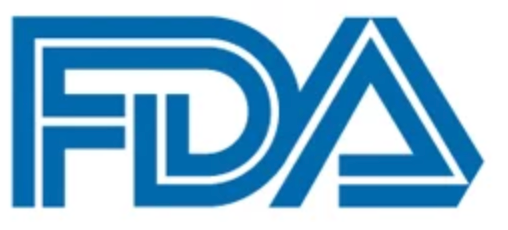FDA Grants Breakthrough Therapy Designation to Tipifarnib for HRAS-Mutated HNSCC
February 24, 2021 - The FDA has granted a breakthrough therapy designation to tipifarnib for use in patients with recurrent or metastatic HRAS-mutated head and neck squamous cell carcinoma with variant allele frequency of 20% or higher following progressive disease on platinum-based chemotherapy.

The FDA has granted a breakthrough therapy designation to tipifarnib for use in patients with recurrent or metastatic HRAS-mutated head and neck squamous cell carcinoma (HNSCC) with variant allele frequency (VAF) of 20% or higher following progressive disease on platinum-based chemotherapy.1
The decision is based on findings from the phase 2 RUN-HN trial (KO-TIP-001; NCT023383927) presented during the 2020 ASCO Virtual Scientific Program, in which tipifarnib elicited an objective response rate (ORR) of 50.0% (95% CI, 26.0%-74.0%) in response-evaluable patients with HRAS-mutant HNSCC and a high VAF.2
“We are very pleased that the FDA has awarded breakthrough therapy designation to tipifarnib, and we appreciate the agency’s affirmation of its potential to treat this devastating disease,” Troy Wilson, PhD, JD, president and chief executive officer of Kura Oncology, stated in a press release. “We remain focused on conducting our AIM-HN registration-directed trial and look forward to working closely with the FDA to bring this therapy to patients as soon as possible.”
The trial enrolled patients with solid tumors that harbored HRAS mutations. The first stage of the trial comprised 2 cohorts: patients with thyroid cancer (n = 13) and patients with a solid tumor other than thyroid cancer (n = 13).
For the second stage of the trial, those in cohort 2 who had HNSCC moved into a HNSCC extension cohort, which could enroll up to 30 patients. Cohort 3 was also added, and this would enroll up to 20 patients with tumors other than HNSCC. Here, patients had to have a 35% or higher HRAS-mutant VAF or a 20% or higher HRAS VAF with serum albumin of 3.5 g/dL or higher.
To be eligible for enrollment, patients could not have any curative therapeutic option available to them, they had to have a tumor harboring a HRAS mutation, measurable disease per RECIST v1.1 criteria, and an ECOG performance status of either 0 or 1.
In the second stage of the trial, patients were given oral tipifarnib at a twice-daily dose of 600 mg on days 1 through 7 and days 15 through 21 as part of 28-day treatment cycles.
The primary end point of the trial was ORR achieved with tipifarnib, while the secondary end point was safety and tolerability. Investigators examined progression-free survival (PFS) and duration of response (DOR) as exploratory end points.
A total of 21 patients were enrolled to the trial at the time of the presentation and 20 of them received treatment. Eighteen patients were determined to be evaluable for efficacy. The median age of study participants was 64 years, 66.7% were male, and in 52.4%, the primary tumor location was the oral cavity. Patients received a median of 2 previous anticancer regimens, and these treatments included platinum-based chemotherapy (90.5%), immunotherapy (61.9%), and cetuximab (Erbitux; 52.4%). Approximately 30% of patients were positive for human papillomavirus.
Additional results revealed that the median DOR with tipifarnib was 14.7 months. Moreover, the median PFS with the agent was 5.9 months (95% CI, 3.5-19.2), and the last previous line of treatment was 2.8 months (95% CI, 1.1-5.2). The median overall survival reported with tipifarnib was 15.4 months (95% CI, 7.0-46.4).
Tipifarnib is also under examination in the international, multicenter, open-label, phase 2 AIM-HN/SEQ-HN trial (KO-TIP-007; NCT33719690) in patients with HRAS-mutated HNSCC. Investigators seek to determine the ORR of tipifarnib in these patients; they will also retrospectively evaluate how the ORR to frontline treatment compares between the accrued patients with HRAS-mutated disease and matched-case control patients with HRAS wild-type disease.
The agent is also examination in patients with HRAS-mutated urothelial carcinoma (IST-01; NCT025335650).
References
- Kura Oncology receives FDA breakthrough therapy designation for tipifarnib in head and neck squamous cell carcinoma. News release. Kura Oncology, Inc. February 24, 2021. Accessed February 24, 2021. http://bit.ly/3usUOYO.
- Ho AL, Hanna GJ, Scholz CR, et al. Preliminary activity of tipifarnib in tumors of the head and neck, salivary gland and urothelial tract with HRAS mutations. J Clin Oncol. 2020;38(suppl 15):6504. doi:10.1200/JCO.2020.38.15_suppl.6504



